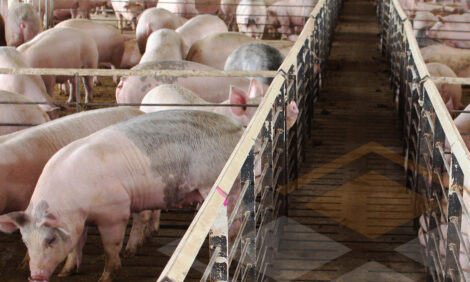



New Light Shed on PCV2 Genotypes
Researchers in Harbin, China, have shed new light of the porcine circoviruses, which will help future research into the pathogenic strains involved post-weaning multi-systemic wasting syndrome (PMWS).The first construction of an infectious clone for newly emerging mutation porcine circovirus type 2 (PCV2) is reported by Chang M. Liu and colleagues at the Veterinary Research Institute of the Chinese Academy of Agricultural Sciences in Harbin. The group also compared this clone with PCV2a and PCV2b genotypes in terms of its biological characteristics in vitro. Their paper is published in Virology Journal.
PCV2, the causative agent of PMWS, is a serious economic problem in the swine industry, explain the Harbin scientists. Different genotypes (PCV2a, PCV2b and PCV2d) of the virus are present in the clinical cases in China, and it is necessary to elucidate the pathogenic difference among different genotypes of PCV2.
In their study, four strains of different genotypes were isolated, two were ordinary strains and another two were mutation strains, which there are one and two amino acids elongation in the capsid protein (Cap) of PCV2, respectively. Representative strains of different genotypes of the virus were constructed by infectious molecular clone and biological characterization of the rescued viruses were identified in vitro.
Results
Four PCV2 isolates (PCV2a/CL, PCV2b/YJ, PCV2a/JF and PCV2d/BDH) of different genotypes were isolated from the clinical cases of PMWS in China. Four infectious clones of PCV2 were constructed and the rescued viruses were harvested after transfection into PK15 cells. The rescued viruses were verified by nucleotide sequence analysis, morphology of the viruses and immunoperoxidase monolayer assay (IPMA). The rescued viruses propagated stably after consecutive incubation for more than 10 passages, and virus propagation reached its peak 72 hours post-infection (PI), and the virus titres were up to 105.7 TCID50/ml.
By using neutralising 1D2 monoclonal antibody (mAb) of PCV2, the antigen capture ELISA showed that only the PCV2a/rCL and PCV2a/rJF strains have immunoreactivity with the 1D2 mAb, however, another two rescued strains (PCV2b/rYJ and PCV2d/rBDH) do not, which indicated the antigenic difference between the rescued viruses of different genotypes.
This is the first report of obtaining the newly emerging PCV2 with mutation in vitro by infectious molecular clone technology, according to Liu and co-authors.
Conclusions
PCV2 shows prevailing differences in genomic and ORF2 gene length and antigen in swine herds in China, say the Harbin researchers. Four representative clones for different genotypes were constructed and rescued, which will facilitate further studies on the pathogenic differences resulting from different sub-types of PCV2.
Reference
Guo L.J., Y.H. Lu, L.P. Huang, Y.W. Wei, H.L. Wu and C.M. Liu. 2011. First construction of infectious clone for newly emerging mutation porcine circovirus type 2 (PCV2) followed by comparison with PCV2a and PCV2b genotypes in biological characteristics in vitro. Virology Journal, 8:291. doi:10.1186/1743-422X-8-291
Further Reading
| - | You can view the full report (as a provisional PDF) by clicking here. |
Further Reading
| |
- | Find out more information on PMWS by clicking here. |
June 2011






